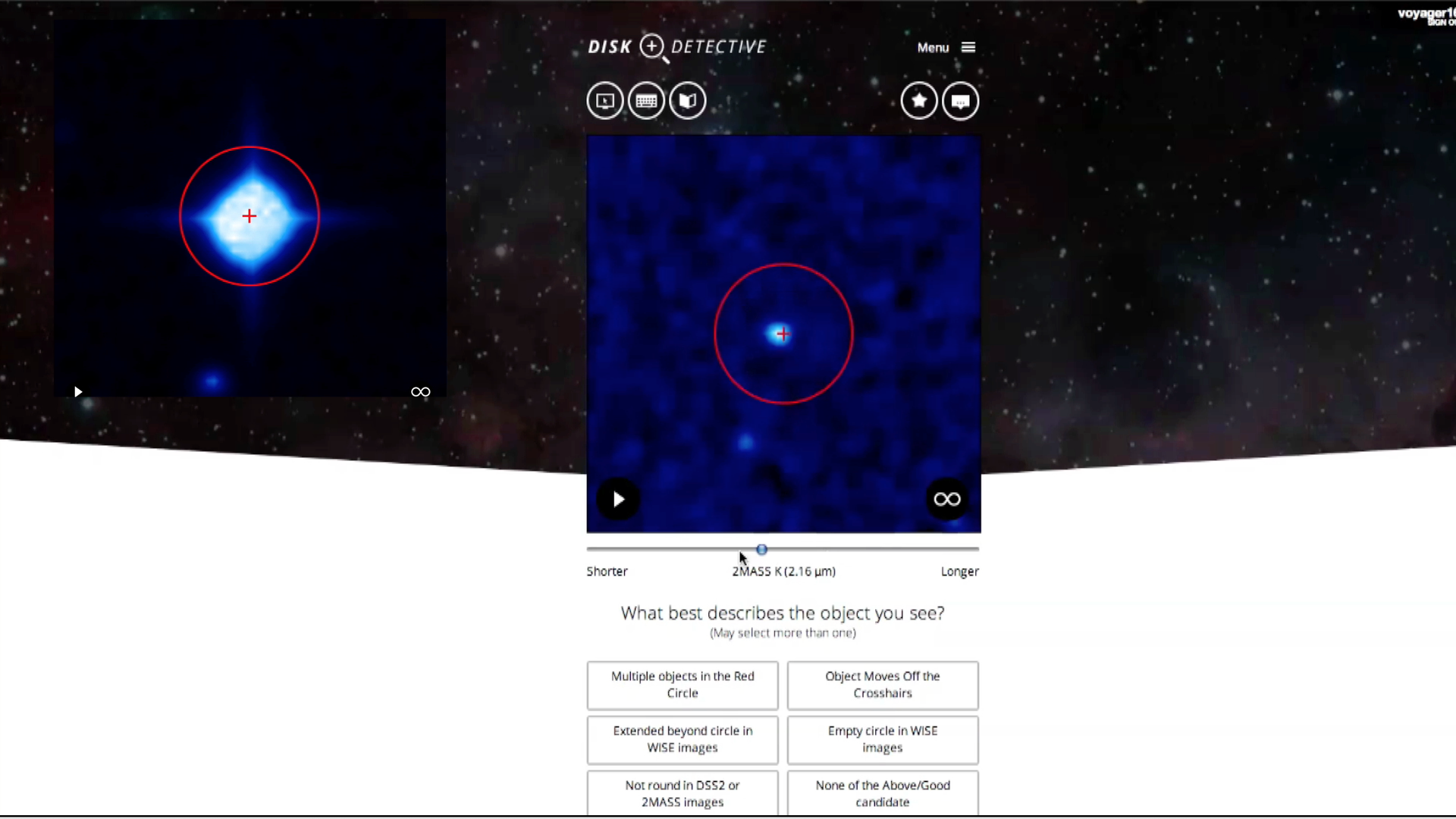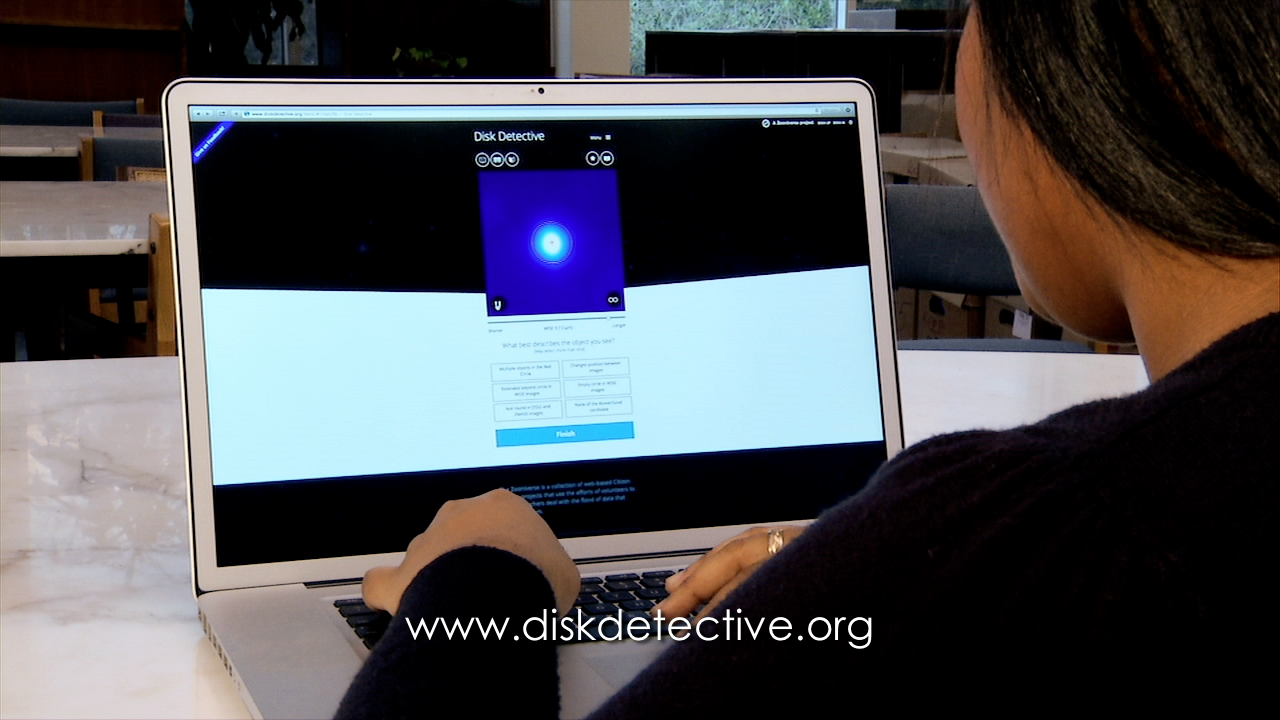'Disk Detectives' Top 1 Million Classifications in Search for Planetary Habitats
Volunteers using DiskDetective, a NASA-sponsored citizen science website to find potential planetary nurseries, have made 1 million classifications in less than a year. Goddard astrophysicist Marc Kuchner, the project's principal investigator, explains how it works.
Watch this video on the NASA Goddard YouTube channel.
For complete transcript, click here.
Citizen scientists using the NASA-sponsored website DiskDetective.org have logged 1 million classifications of potential debris disks and disks surrounding young stellar objects (YSO). This data will help provide a crucial set of targets for future planet-hunting missions.
By combing through objects identified in an infrared survey made with NASA's Wide-field Infrared Survey Explorer (WISE) mission, Disk Detective aims to find two types of developing planetary environments: YSO disks, which are less than 5 million years old and contains large quantities of gas, and debris disks, which tend to be older than 5 million years, and contain belts of rocky or icy debris.
Computer searches already have identified some objects seen by the WISE survey as potential dust-rich disks. But software can't distinguish them from other infrared-bright sources, such as galaxies, interstellar dust clouds and asteroids. There may be thousands of potential planetary systems in the WISE data, but the only way to know for sure is to inspect each source by eye.
At DiskDetective.org, volunteers watch a 10-second "flip book" of a disk candidate shown at several different wavelengths as observed from three different telescopes, including WISE. They then click one or more buttons that best describe the object's appearance. Each classification helps astronomers decide which images may be contaminated by background galaxies, interstellar matter or image artifacts, and which may be real disks that should be studied in more detail. Some 28,000 visitors around the world have participated in the project to date.
The project has so far netted 478 objects of interest, which the team is investigating with a variety of ground-based telescopes in Arizona, California, New Mexico, Argentina and Chile. Disk Detective currently includes about 278,000 WISE sources. The team expects to wrap up the current project sometime in 2018, with a total of about 3 million classifications and perhaps 1,000 disk candidates. The researchers then plan to add an additional 140,000 targets to the site.

The marked asymmetry of the debris disk around the star HD 181327 suggests it may have formed as a result of the collision of two small bodies. Disk Detective aims to discover many other stellar disks using volunteer classifications of data from NASA's WISE mission.
Image credit: NASA, ESA, G. Schneider (Univ. of Arizona), and the HST/GO 12228 Team
Credits
Please give credit for this item to:
NASA's Goddard Space Flight Center
-
Editor
- Swarupa Nune (InuTeq)
-
Producer
- Scott Wiessinger (USRA)
-
Narrator
- Marc Kuchner (NASA/GSFC)
-
Scientist
- Marc Kuchner (NASA/GSFC)
-
Writer
- Francis Reddy (Syneren Technologies)
Release date
This page was originally published on Tuesday, January 6, 2015.
This page was last updated on Wednesday, May 3, 2023 at 1:50 PM EDT.
Series
This visualization can be found in the following series:Tapes
This visualization originally appeared on the following tapes:-
Update to Disk Detectives
(ID: 2015002)
Thursday, January 8, 2015 at 5:00AM
Produced by - Alex Kekesi (Global Science and Technology, Inc.)

